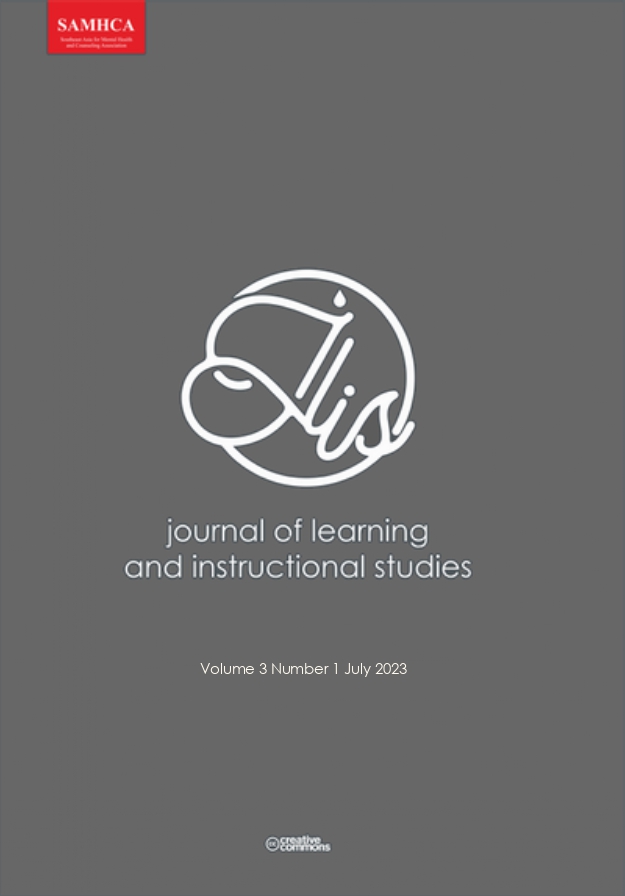Main Article Content
Abstract
The goal of this research is to reduce mistakes or get a satisfactory result in simple present tense. The researcher suggests that the teacher encourage his students to improve their English, especially their writing skills. The teacher should know what to do if he or she knows where most students make mistakes in auxiliary words and word choice. The teacher should help students understand English grammar and vocabulary better. To get a good result, teaching and learning activities must also be improved. The goals of this study are to find out if students make mistakes, what kinds of mistakes they make, and where the mistakes come from among the tenth-grade students at Pandawa Vocational High School. The researcher uses a test and a questionnaire, which are both reliable and valid tools, to collect the data. The information comes from the students in the tenth grade at Pandawa Vocational High School. The researcher uses descriptive qualitative data analysis to figure out what the data mean. The result shows that the average number of mistakes made by students is 51%. It is part of the fair criteria, which is good. The result shows that the students made a total of 177 mistakes. The students make mistakes in 70 miss-formations (39.54 percent), 57 omissions (32.21 percent), 29 miss-orderings (16.39 percent), and 21 additions (11.87 percent).
Keywords
Article Details

This work is licensed under a Creative Commons Attribution 4.0 International License.
References
- Arikunto, Suharsimi. 2013. Prosedur Penelitian Pendekatan Praktik.Jakarta: PT. Renika Cipta
- Azar, Betty. 2002. Understanding and Using English Grammar Third Edition. New York: Longman.
- Brown, Douglas,2007. Principles of Language Learning and Teaching.San Fransisco: Pearson Longman.
- Creswell, John.2012. Educational Research Planning, Conducting and Evaluating Quantitative and Qualitative Research. Boston: Pearson
- Linker & Gass.2008. Second Language Acquisition Third Edition.New York and London: Routledge.
- Nunan, David. 2005. Practical English Language Teaching: Young Learners.New York: Mc Graw-Hill
- Rizal, Rinda. An Error Analysis on Students’ Simple Past Tense Mastery In Their Narrative Text (a case study at the eleventh grade students of SMA N 4 Bekasi. Jakarta (unpublished).
- Schmidt & Richard.2012. Longman Dictionary of Language Teaching and Learning and Applied Linguistics. Pearson Education.
- Sugiono.2015. Metode Penelitian Pendidikan: Kuantitatif, Kualitative, dan R&D. Bandung: Alfabeta
- Tornbury, Scott.2002. How to Teach Grammar. United Kingdom: Longman
- Widoyoko, Eko Putro.2012. Teknik Penyusunan Instrument Penelitian. Semarang: Pustaka Belajar.
References
Arikunto, Suharsimi. 2013. Prosedur Penelitian Pendekatan Praktik.Jakarta: PT. Renika Cipta
Azar, Betty. 2002. Understanding and Using English Grammar Third Edition. New York: Longman.
Brown, Douglas,2007. Principles of Language Learning and Teaching.San Fransisco: Pearson Longman.
Creswell, John.2012. Educational Research Planning, Conducting and Evaluating Quantitative and Qualitative Research. Boston: Pearson
Linker & Gass.2008. Second Language Acquisition Third Edition.New York and London: Routledge.
Nunan, David. 2005. Practical English Language Teaching: Young Learners.New York: Mc Graw-Hill
Rizal, Rinda. An Error Analysis on Students’ Simple Past Tense Mastery In Their Narrative Text (a case study at the eleventh grade students of SMA N 4 Bekasi. Jakarta (unpublished).
Schmidt & Richard.2012. Longman Dictionary of Language Teaching and Learning and Applied Linguistics. Pearson Education.
Sugiono.2015. Metode Penelitian Pendidikan: Kuantitatif, Kualitative, dan R&D. Bandung: Alfabeta
Tornbury, Scott.2002. How to Teach Grammar. United Kingdom: Longman
Widoyoko, Eko Putro.2012. Teknik Penyusunan Instrument Penelitian. Semarang: Pustaka Belajar.

